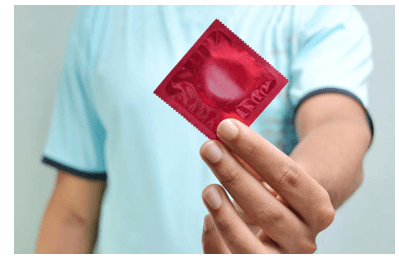Condoms are a popular barrier method of conception. Condoms made of latex, polyisoprene, or polyurethane effectively prevent pregnancy and the transmission of certain sexually transmitted infections (STIs).
Most commercial brands of condoms are very safe and approved by the U.S. Food and Drug Administration (FDA). However, people should look out for novelty condoms and natural condoms, which may not offer the same levels of protection.
In this article, we look at which condoms are safest and provide tips for using condoms to make sure they are effective.
How safe are condoms for pregnancy and STIs?
Male condoms are considered a safe and overall effective form of birth control. According to Planned Parenthood, condoms are 98 percent effective at preventing pregnancy when used correctly. If used incorrectly, the effectiveness rate drops to about 85 percent.
By contrast, female condoms are 95 percent effective when used correctly. When people do not use them correctly, this figure drops to 79 percent.
Both male and female condoms also provide protection against STIs that are transmitted through bodily fluids, including semen, vaginal fluid, and blood. Condoms act as a barrier for all of these fluids and can protect against infections such as:
Condoms do not protect as effectively against some other STIs, such as herpes and genital warts. These infections re transmitted through skin-to-skin contact affecting the labia, scrotum, and inner thighs, and condoms only cover the shaft of the penis or the inside of the vagina or anus.
Safest condoms and methods
Most condoms are very safe. The FDA require all latex and polyurethane condoms to undergo quality testing. They require manufacturers to spot-check their products.
Additionally, the FDA collects random condom samples from warehouses, and fill these with water to check for leaks. At least 996 of every 1,000 condoms must pass the water leak test before the FDA consider them safe for use.
People can use the following advice to make sure they are using the right condoms in the safest possible way:
1. Avoid novelty condoms
Many manufacturers have designed novelty condoms for stimulation rather than protection. Avoid brands that do not mention STI or pregnancy protection.
If a condom does not cover the entire penis, it will not provide complete protection.
2. Read the packaging
Look for a statement on the label that indicates the condom will prevent STIs. Several brands, including Trojan and Duralex, offer varieties of condoms that can help prevent STIs.
However, as mentioned above, condoms do not protect against all STIs. People may still contract an STI that someone transmits through skin-to-skin contact.
People should always read the label carefully and read up on specific brands to confirm whether the condom meets all safety standards.
3. Avoid natural condoms
Natural condoms are a long-standing alternative to latex condoms. They are effective for preventing pregnancy, but they often do not protect against STIs.
People with latex allergies, or those looking for an alternative to latex, should instead try polyurethane condoms. These are slightly more expensive but offer a looser fit and the same protection as latex condoms against STIs and pregnancy.
4. Use lubricated condoms
Not everyone needs to use extra lubrication. The vagina naturally produces lubrication when a person is aroused. However, sometimes this lubrication is not enough.
In these cases, people should either use lubricated condoms or a separate water-based or silicon-based lubricant.
Lubrication on the outside of the condom reduces friction during sex and helps prevent the condom from either slipping off or breaking during sex.
5. Do not use oil-based lubricant
Oils, such as baby oil, lotions, or petroleum jelly, can cause the condom to break, and people should not use these with condoms.
6. Do not use expired condoms
Condoms have an expiration date written on their packaging. If a condom is past its expiration date, a person should throw it away, as it will be more likely to break than a newer one.
7. Avoid condoms that were not stored correctly
Condoms are affected by heat and friction, so the way people store them is important.
Always store condoms in a cool, dry place, as they can break down in extreme hot or cold temperatures. Storing condoms in an extreme temperature environment can weaken a condom and make it less effective.
People should not store condoms in their wallet, as they can be exposed to friction and heat which can cause weakness or tears.
8. Avoid condoms with spermicide
Some condoms contain spermicide. The FDA has approved nonoxynol 9 (N-9) as an over-the-counter spermicide. For some people, this spermicide may cause vaginal or anal irritation. For others, this may not be an issue.







